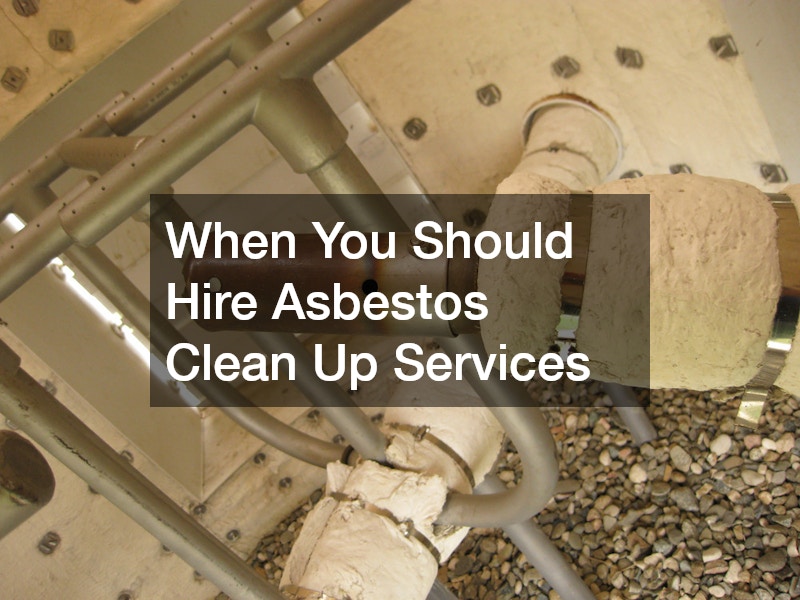Asbestos is a hazardous material once commonly used in construction. Understanding when to hire asbestos clean up services is crucial for maintaining a safe environment. This article explores the key considerations for identifying asbestos risks and when it’s appropriate to seek professional help.
What are the Health Risks Associated with Asbestos Exposure?
Understanding Asbestosis
Asbestosis is a chronic lung disease caused by inhaling asbestos fibers. The condition can lead to severe respiratory issues, scarring of lung tissues, and significantly impaired lung function. Early diagnosis and management of asbestosis are crucial to slow disease progression and improve quality of life.
The symptoms of asbestosis include shortness of breath, persistent cough, and chest tightness. Over time, these symptoms may worsen, leading to decreased exercise tolerance and oxygenation difficulties. Long-term exposure to asbestos fibers without adequate protection can increase the likelihood of developing asbestosis.
Medical professionals often use imaging tests and lung function tests to diagnose asbestosis. Despite the chronic nature of the disease, lifestyle changes and medical interventions can help manage symptoms. Understanding these health implications underscores the importance of proper asbestos management.
Other Significant Health Concerns
Beyond asbestosis, prolonged exposure to asbestos can cause serious conditions like lung cancer and mesothelioma. Mesothelioma, a rare form of cancer, primarily affects the lining of the lungs and can be directly attributed to asbestos exposure. Lung cancer from asbestos exposure has a latency period, often appearing years after initial contact with the fibers.
The risk of developing these serious health conditions increases with the duration and intensity of exposure. Asbestos-related lung cancer is notably more aggressive than other forms, often requiring robust medical intervention. Asbestos fibers, once inhaled, can lead to long-term health challenges, demanding proactive safety measures.
Across the spectrum of illnesses, the prognosis for asbestos-related conditions varies based on early detection and comprehensive medical care. Understanding the multifaceted health risks associated with asbestos is paramount. This knowledge is essential for shaping preventative measures and opting for timely professional clean-up services where necessary.
Vulnerable Populations
Certain populations are more susceptible to asbestos-related health risks due to occupation or age. Workers in construction, shipbuilding, and manufacturing are particularly at risk, often in environments where asbestos fibers are prevalent. Additionally, family members of such workers may also be vulnerable due to secondary exposure via clothing or other means.
In addition to occupational hazards, older buildings with deteriorating materials can pose risks to residents and maintenance workers. Children and the elderly are especially vulnerable, given their developing or compromised respiratory systems. The geographical factor also plays a role, as some regions may have more older buildings containing asbestos.
With increased awareness, vulnerable populations can take preventive steps to minimize exposure. Regular health check-ups and environmental assessments can offer additional protection against potential asbestos risks. Recognizing vulnerable groups allows for targeted educational efforts to mitigate exposure risks effectively.
When is Professional Asbestos Clean-Up Required?
Recognizing the Presence of Asbestos
Recognizing the presence of asbestos in your environment is crucial for safety. Buildings constructed before the 1980s often contain asbestos in roofing, flooring, and insulation, necessitating vigilance. When suspected, it’s essential to seek a professional evaluation to confirm and assess the extent of the asbestos presence.
Visual identification can be challenging, as asbestos is often mixed with other materials. Therefore, testing by certified professionals is advised to ascertain its presence accurately. Once confirmed, developing a plan for its management or removal with professional guidance is imperative for minimizing health risks.
Awareness and timely intervention are critical in preventing exposure. Implementing safety measures involves understanding potential hotspots and engaging professionals when suspicions arise. This proactive approach ensures a healthier and safer living or working environment.
Legal and Safety Regulations
Navigating legal and safety regulations regarding asbestos is paramount for compliance and safety. In many regions, laws require licensed professionals to handle asbestos inspection, removal, and disposal. These regulations aim to protect public health by ensuring safe asbestos management practices.
Failure to comply with these legal requirements can result in severe fines and health hazards. Understanding the legal landscape helps property owners and employers adhere to safety standards effectively. Engaging with professional asbestos clean-up services can alleviate legal burdens, offering peace of mind and compliance.
Regulatory bodies provide guidelines outlining best practices for handling asbestos materials. Staying informed about these regulations helps mitigate risks and supports environmental and public health efforts. Professional services ensure adherence to these rules, safeguarding both health and legal standing.
Recognizing the dangers of asbestos and knowing when to engage in professional clean-up services is vital for health and safety. Use the information outlined to make informed decisions and ensure a safe environment. Proactive measures and expert services combine to protect against the widespread risks posed by asbestos exposure.
.


